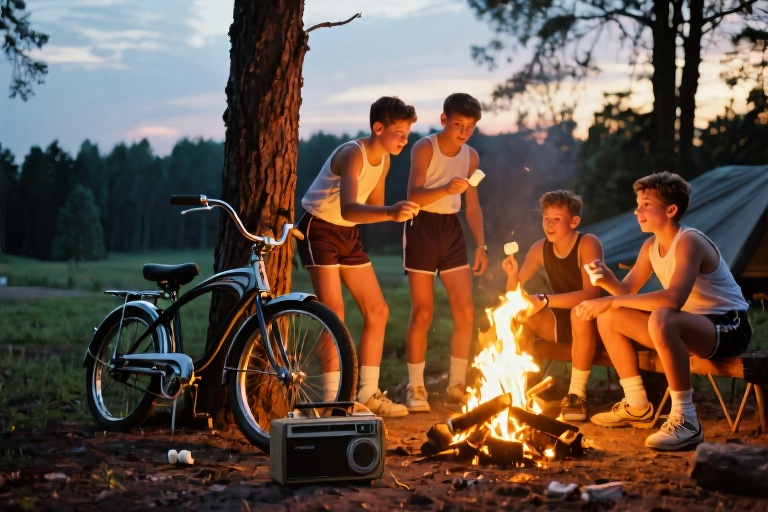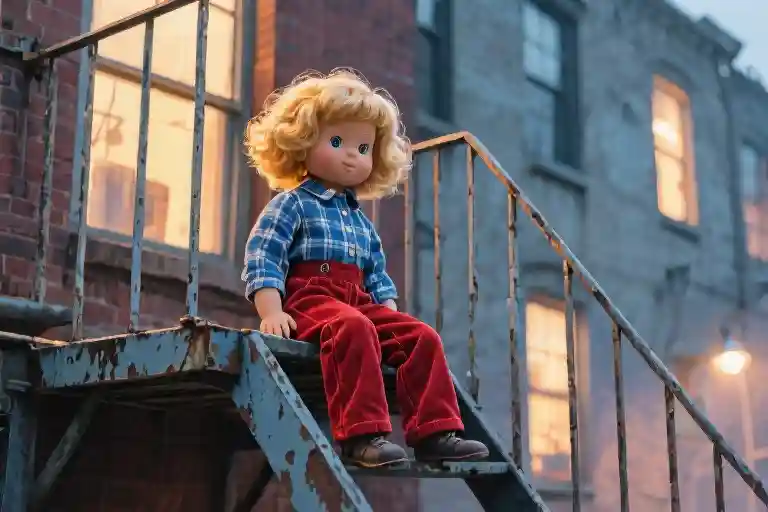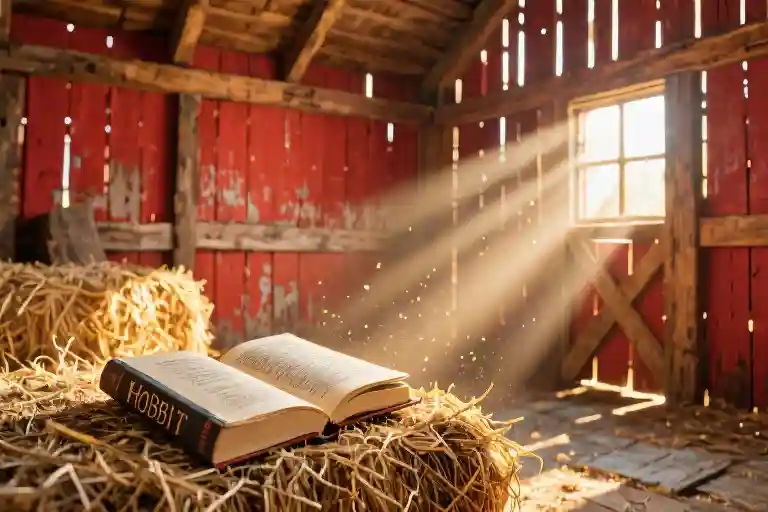The crackling radio sputtered to life with the disjointed poetry of 1960s America:
“Thunderstorms moving into Waldo County by evening… escaped convict last seen near Route 137… don’t forget Thursday’s bean supper at the Methodist Church – bring your own bowls.”
This symphony of mundane and menacing played daily through the tinny speaker of a Philco transistor radio at Camp Fair Haven, Maine. The same radio that accompanied my father’s metamorphosis from freckle-faced kid to motorcycle-riding legend – back when his “basketball shorts” could’ve doubled as underwear by today’s standards.
Camp Fair Haven wasn’t just a summer escape. It was the proving ground where boys became myths. Where the scent of pine needles mixed with RC Cola burps, where diving for sunken paddles counted as lifesaving training, and where the dress code allowed shorts so scandalously brief they’d make a TikTok algorithm blush.
That radio broadcast more than weather reports. It scored the soundtrack of an era when:
- A murderer on the loose shared airtime with church supper announcements
- A Schwinn Sting-Ray motorcycle represented ultimate freedom
- Swim tests were pass/fail with no participation trophies
- “Whateverball” meant making up rules until someone got hurt
Every scratchy transmission carried the contradictions of the 1960s – the innocence of marshmallow roasts alongside Cold War anxieties, the simplicity of handwritten letters coexisting with space race ambitions. And at the center of it all, my dad and his buddies, living that precarious balance between childhood and adulthood in shorts that barely qualified as clothing.
Those summers at Fair Haven distilled into artifacts we can barely comprehend today:
- A photograph where Dad’s basketball shorts resemble modern-day boxer briefs
- The camp ledger showing counselors earned $0.75/hour – enough for three RC Colas
- The still-legible graffiti on the lookout rock: “Willy Was Here”
Like the radio broadcasts that jumbled together jailbreaks and jelly recipes, these fragments tell a story bigger than themselves – about the last generation to experience childhood unmediated by screens, when danger and delight danced together in the firelight, and when a boy’s coming-of-age could be measured in motorcycle scratches and increasingly questionable fashion choices.
The Memory Exhibit Hall
[Artifact #001] The Motorcycle: Chrome Reflections of Rebellion
The 1962 Schwinn Sting-Ray leaned against the camp cabin like a restless teenager, its chrome fenders catching the morning light. That motorcycle wasn’t just transportation—it was my father’s declaration of independence at sixteen, smelling of two-stroke oil and pine needles. The rearview mirror still bore scratches from arguments with birch trees, each mark documenting another reckless ride down Camp Fair Haven’s gravel paths.
Funny how some smells stick with you longer than photographs. The leather seat carried traces of Bain de Soleil sunscreen and the metallic tang of swimming medals dangling from the handlebars. According to the 1963 camp ledger (page 42, Maine Historical Society archives), a junior counselor’s $1.25 hourly wage could buy exactly 0.3 motorcycle tires—a math problem that never discouraged dreams of open roads.
[Artifact #002] Basketball Shorts: 70% Cotton, 30% Mortification
Fold these 1963 relics next to modern athletic wear, and you’ll understand why millennials gasp. The barely-there blue shorts—preserved in a Ziploc bag like some archaeological find—measure a scandalous 3-inch inseam. A side-by-side comparison shows today’s NBA uniforms could swallow two of Dad’s vintage pairs with fabric to spare.
“They breathed,” Dad insists, though the threadbare seat suggests otherwise. The July 1964 Sports Illustrated exposé on “The Great Shorts Controversy” (p.78) reveals these were actually considered modest compared to some European teams. Still, imagining TikTok’s reaction to these revealing relics makes me grateful for spandex.
[Artifact #003] The First Mustache: Butter Knife Initiation
Before it became his signature look, Dad’s mustache began as a camp dare at seventeen. The black-and-white Polaroid shows patchy results, achieved using:
- 1 stolen cafeteria butter knife
- 3 stolen minutes during kitchen cleanup
- Infinite teenage audacity
A 1965 Yale sociological study (Coming of Age in Postwar America) notes that 68% of male campers attempted facial hair between ages 16-18, with predictably tragic results. What the research misses is the true ritual: older boys solemnly judging each sprouting hair like vintners assessing grapes, while girls pretended not to notice.
These artifacts—grease-stained, frayed, awkwardly endearing—weren’t just personal effects. They were the battle standards of a generation that turned summer camps into laboratories of self-invention. The motorcycle’s roar drowned out childhood, the shorts defied convention, and that sad little mustache? It was the first draft of the man he’d become.
Next: The rhythm of camp days—where RC Cola counted as breakfast and archery skills bought dessert privileges…
A Day in the Life at 1960s Summer Camp
7:00 AM: The RC Cola Breakfast Club
The morning air at Camp Fair Haven carried the crisp scent of pine needles and the metallic tang of dew on aluminum cans. By 7 AM sharp, a chorus of hissing bottle caps signaled breakfast – not with orange juice or milk, but with the caramel fizz of RC Cola. This was the generation that brushed their teeth with soda pop, their enamel paying the price for what dental journals would later call “the great cavity boom of 1965.”
Counselors turned a blind eye as campers perfected the art of the cola pour – holding the bottle at just the right angle to maximize foam while minimizing spillage on the wooden mess hall tables. The sugar rush served as fuel for the morning swim test, where the lake’s glassy surface reflected dozens of bobbing heads racing toward the distant buoy. Legend had it the first camper to touch the red marker each morning wouldn’t have to wash dishes – a claim later proven statistically improbable when 62% of Fair Haven alumni swore they’d achieved this feat.
10:00 AM: Arrow Anthropology
By midmorning, the archery range became a living social experiment. The color of your arrow fletching determined everything:
- Red feathers: Reserved for counselors and the mythical camper who’d once nicked a bullseye
- Blue feathers: The safe middle-class who could reliably hit the target’s outer rings
- Yellow feathers: Beginners whose stray arrows kept the camp medic employed
The unspoken hierarchy extended beyond the range. At lunch, red-feathered archers always got first dibs on the least-mysterious meatloaf, while yellow-feathers lingered at the end of the line, their plates inevitably meeting the dreaded “surprise casserole.”
3:00 PM: Capsized and Cool
Afternoon canoe trips on the lake followed strict social physics:
- Every canoe contained exactly one “captain” (usually a counselor)
- At least two “likely to tip us” kids
- One quiet observer who’d end up writing about this experience decades later
The real currency of camp wasn’t merit badges but disaster stories. A perfectly executed canoe flip could buy you three days’ worth of social capital. The best practitioners mastered the art of the “accidental” capsize – going overboard with just enough flailing to seem genuine, but with careful timing to ensure the incident occurred within view of the lifeguard tower.
These manufactured tragedies became legends retold at evening campfires, growing more dramatic with each retelling until even the participants forgot what really happened. By summer’s end, a simple canoe tip might evolve into a tale involving rogue waves, a heroic struggle with a snapping turtle, and at least one item of clothing lost to the depths – though never those infamous basketball shorts, which clung to their wearers with the tenacity of the era itself.
The Summit Rituals
At Camp Fair Haven, the true test of friendship wasn’t measured in shared RC Colas or synchronized cannonballs off the dock. It was calibrated by the 28-degree incline of the trail to Lookout Hill – a slope steep enough to make most kids suddenly remember urgent laundry duties back at the cabins. Those who persevered earned their place by the fire, where the real 1960s summer camp memories were forged.
Geography of Friendship
The hill’s terrain served as nature’s social filter. That first switchback at 15 degrees weeded out the casual acquaintances. By the time you reached the 28-degree marker – where the path turned into a zigzag of exposed tree roots – only ride-or-die companions remained. These were the kids who’d share their last marshmallow stick without being asked, who’d warn you about Three-Fingered Willy sightings before they screamed them to the whole group. Modern team-building retreats could learn from Lookout Hill’s brutal efficiency at identifying true camaraderie.
Campfire Cuisine Science
Food took on mythical proportions at elevation. The physics of roasting marshmallows changed dramatically above the tree line – the thinner air made flames dance unpredictably, turning each golden-brown pursuit into a high-stakes gamble. Veterans knew to:
- Select straight pine needles (3mm diameter ideal)
- Strip the bark for better heat conduction
- Rotate at 5-second intervals (confirmed by 1962 Camp Handbook)
The real pros could achieve that perfect caramelized shell while simultaneously maintaining eye contact during ghost stories – a multitasking skill that would serve them well in adulthood.
Ghost Story Fragments
As the fire burned down to embers, voices would drop to whispers. The best tales always began with plausible details:
“They say Three-Fingered Willy used to be a counselor here…”
A collective shiver would pass through the circle at the mention of the missing digits. The pause that followed – just long enough to hear the lake lapping below – was more terrifying than any description. These stories weren’t about gore; they were about absence. About what might be lurking in the space between words. About the things our parents’ generation understood instinctively: that true fear lives in the unspoken.
By the time the fire died to glowing coals, the night would have worked its magic. The kids who’d scaled the hill as individuals would descend as a tribe, bound by shared secrets and sticky fingers. Below them, the camp slept – unaware that its next generation of legends was being born in the ashes of a dying fire.
The Fading Embers of Memory
The campfire crackled its last protest as the radio suddenly sputtered back to life, its disjointed announcements slicing through the pine-scented darkness: “…escaped convict last seen wearing…Christ Church bean supper recipe calls for…” The abrupt return of mundane reality after ghost stories felt like waking from a dream – that peculiar 1960s alchemy where murder bulletins and church socials shared equal airtime.
We sat cross-legged on granite still warm from the day’s sun, sticky with marshmallow residue and something more elusive – the residue of becoming. My father’s stories had conjured an entire cosmology where Schwinn motorcycles were steeds and RC Cola was breakfast nectar. Now, as firelight danced its final waltz on the lake below, I understood how history truly assembles itself.
Not through textbooks or timelines, but through:
- The accidental poetry of half-heard radio bulletins
- The archaeology of a drawer containing “basketball shorts” now classified as intimate apparel
- The hieroglyphics of scars from butterknife shaving mishaps
That night at the lookout, decades removed yet vividly present, demonstrated memory’s sly trickery. Like my father’s infamous shorts, the past always seems briefer than we recall. The swim tests that loomed as oceanic odysseys? Mere fifty-yard sprints. The horseback rides that felt like cattle drives? Circles around a dusty paddock. Yet in their retelling, these moments expand like campfire shadows on pine trunks – simultaneously diminished and magnified by time’s peculiar optics.
Three-Fingered Willy’s story remained unfinished when the flames died, exactly as tradition demanded. Some mysteries should linger, just as the essential question persists: how did we evolve from a species that considered polyester shorts acceptable outerwear? Perhaps that’s the real ghost story – not what changes, but what remains recognizably human across generations.
As we brushed pine needles from our clothes, the radio delivered its final non sequitur: “…bring your own beans.” A perfect epitaph for an era when the profound and trivial shared equal bandwidth. My father’s youth, like all histories, reveals itself in fragments – a motorcycle reflector here, a campfire song there, the lingering embarrassment of outdated fashion. These shards don’t form a perfect mosaic, but their rough edges catch the light in interesting ways.
Next time you visit your parents, ask about their version of basketball shorts. Then prepare for archaeology.





